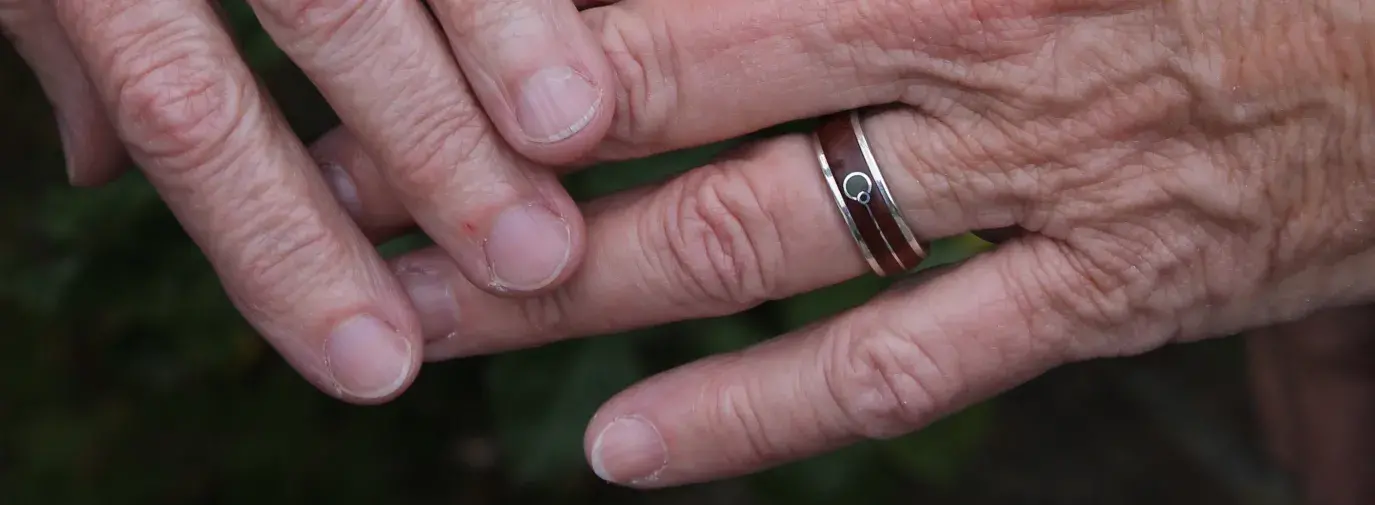
Dearly beloved, we are gathered here today to witness the wedding industry’s commitment to sustainability.
According to a 2017 Stanford Mag article, the average carbon footprint of an American wedding is 56 tons. In 2022 alone, 2.5 million weddings are expected to take place, producing 140 million tons of emissions.
Don’t panic–your day can be glamorous without harming the planet.
Cheers to Catering
One of the worst offenders of wedding waste is catering. In 2017, UK supermarket Sainsburys found a tenth of all wedding food is thrown away and a fifth of guests said they didn’t eat the late-night reception food.
Ahead of the big day, research organizations to compost or donate leftovers, like FoodCycle in LA or the nationwide Food Recovery Network.
It’s also good to think about sustainable food and dishware options.
If you splurge on local and organic catering, you’ll avoid pesticides and transportation costs. If you’re in the DC metro area, try Green Plate Catering. Picking a seasonal menu will also support local farmers.
When sipping the signature cocktail or eating that vegetarian ceviche, don’t use plastic dishware. Consider, instead, renting or thrifting dishware. There are rental companies across the country, with pieces ranging from .50 cents to several dollars.
Be careful if you want to use crystal glassware. Bonnie Gringer, founder of the secondhand shop Share the Lovely, told Insider that such antiques “were likely made using outdated safety standards” and could contain harmful substances like lead.
Say “I Do” in a Thrifted Outfit
Looking and feeling your best is one of the great joys of a wedding, whether your own or someone else’s. And you don’t need a brand new outfit—someone’s something old can be your something new.
Whether it’s a dress, suit, or bell-bottomed disco jumpsuit, try giving an outfit another life. Thrift or buy/rent from one of the many secondhand sites like StillWhite and Rent The Runway. Want to try your outfit on first? Look for consignment bridal stores like Something Bridal in Oklahoma.
If you buy something new, consider a sustainable clothing company and donate your outfit after the big day.
The same goes for your guests. Instead of a strict dress code, encourage your guests to thrift or re-wear what makes them feel fabulous.
Yes, You Can Be a Flower Child!
Florals are a staple of weddings and, unfortunately, terrible for the environment. Arranged florals pollute the planet through greenhouse gas emissions from transportation and refrigerants. In 2018 alone, the International Council on Clean Transportation found that flying imported roses into the US emitted 360,000 metric tons of CO2.
When it comes to decorating, consider alternatives, like DIY décor; from flowers made of recycled paper to bouquets made out of book pages, and potted plants guests can take home.
If you want a more traditional floral display, work with a sustainable florist like New York-based Good Old Days Florist and ask about re-using products from another recent event. You can also donate florals to hospitals, assisted living facilities, and places of worship after.
The Theme Is: Sustainability
Details make your wedding feel unequivocally yours. Don’t forget to go green with the little things amid everything else:
No rice, glitter, or confetti—they're difficult to clean up, potentially harmful to local wildlife, and often not biodegradable. If you need to make it rain, hole-punch some leaves for nature’s confetti!
Swap the stationery for e-invites and online RSVPs or print on recycled paper.
Ditch the plastic favors for something edible, or let guests take home the décor.
Include a charity on your registry.
Your big day is a celebration of love. Use these tips to show your love in a sustainable way.
What about Rings?
Classic, romantic, and timeless—like the love you share with your person. That’s what wedding rings are all about! Finding a ring that symbolizes your love without harming the planet isn’t as tough as you might think.
Recycled gems: Finding recycled gems prevents the need for further mining. Ask your jeweler if they have “reclaimed” and “recycled” gems, or search antique, vintage, and estate sales.
Recycled gold: Whether yellow, white, or rose, opt for recycled. Like recycled gems, recycled gold is simply gold from other jewelry remelted into the perfect ring. There’s also recycled platinum, titanium, and sterling silver, if gold is not for you.
Family heirlooms: Why purchase a ring when there’s a beautiful heirloom in the family? This is a planet-friendly—and sentimental—way of sharing your love by declaring it with a ring passed down to you. If you don’t have a family heirloom, visit antique and vintage stores.
Wood rings: Unique and beautiful, wood rings speak volumes of your love for your person and the planet. Naturaleza Organic Jewelry makes custom wood rings from foraged wood, recycled metals, and unique gems.
“From family heirlooms, to trees in a yard, to reclaimed Bourbon barrels from Kentucky, trees and their wood have a lot of meaning and symbolism in our lives,” says Amy Shelton, who co-owns Naturaleza with her husband Marlon Obando Solano. “We welcome our customers to provide wood or other materials that are meaningful to them to create their custom wedding rings.”
Naturaleza also invests in reforestation projects in Nicaragua to combat climate change, rooting your ring in stewardship of the Earth.
The Dirty Diamond
Some people prefer the classic diamond, but there are some important things to look out for. Mined diamonds are responsible for erosion, dangerous working conditions, and human rights abuses. The most infamous of gems are “blood diamonds,” called that because they financed civil wars in African countries, where many minerals are mined. Fortunately, blood diamonds are rarely in the market nowadays after the 2006 movie Blood Diamond shined a light on these atrocities.
When searching for rings with diamonds, the keywords to look for are “conflict-free,” “recycled,” and “vintage” diamonds, which means your purchase will not finance a war. Lab-grown diamonds are indistinguishable from a mined diamond—but many are made using high-pressure, high-temperature technology run on fossil fuels. New technology has made it possible to create diamonds from extracting CO2 in the air, and some companies are using renewable energy to fuel this process, reducing the overall impact. The best option of all is used and recycled diamonds, which require no further energy to grow or mine. When purchasing, it’s always good practice to email or call the company to verify its claims and ensure it is not greenwashing.
Regardless of what ring you choose, aim for one that is good for people and the planet as well as your loved one.







